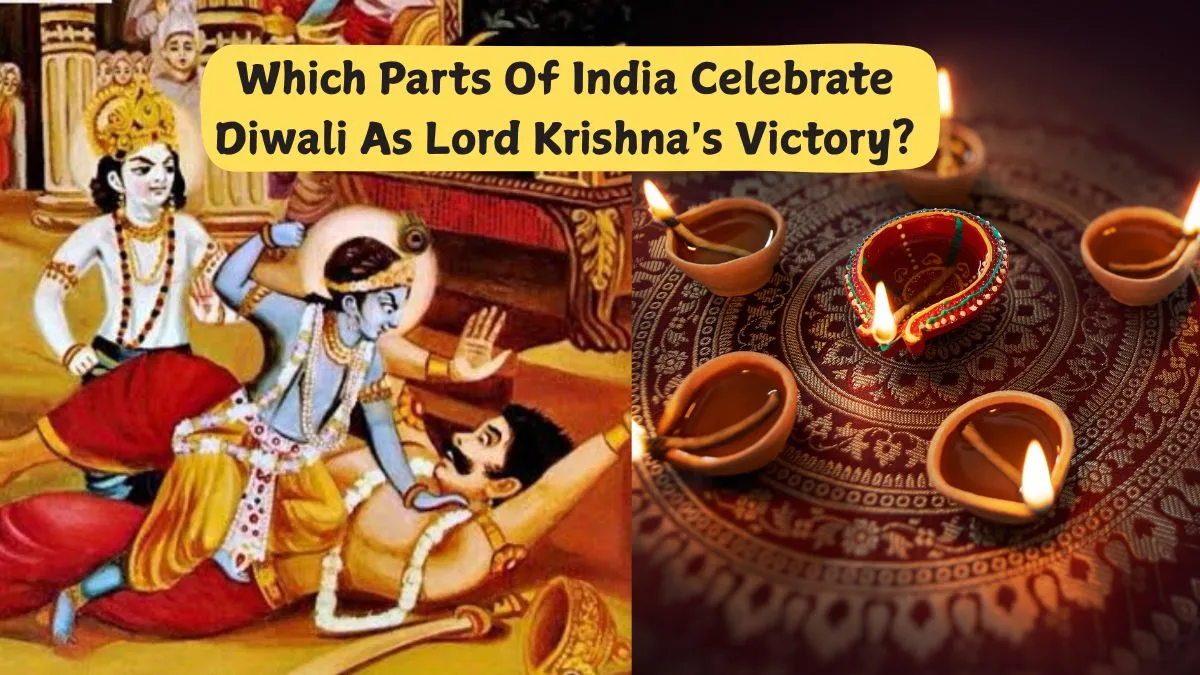- By Aditi Priya Singh
- Sun, 19 Oct 2025 04:12 PM (IST)
- Source:JND
India celebrates Diwali, the festival of lights, with great energy and joy. What's interesting, though, is that different places have different stories and meanings for Diwali. South India associates Diwali with Lord Krishna's conquest of the demon Narakasura, while the majority of North India celebrates it as the return of Lord Rama to Ayodhya following his victory over Ravana. This little-known but potent story symbolises the victory of truth over evil and light over darkness.
In southern states, the day, also called Chhoti Diwali or Naraka Chaturdashi, has great spiritual significance. Lighting diyas, taking oil baths in the morning, dressing in new clothes, and praying are all ways that people celebrate. In addition to celebrating Diwali, this version emphasises mental and spiritual purification.
Let’s explore how South Indians celebrate this unique version of Diwali and the divine story of Lord Krishna that inspires it.
The Story Of Lord Krishna And Narakasura
Ancient Hindu scriptures claim that the demon king Narakasura, who ruled over Pragjyotishpur (modern-day Assam), terrorised both heaven and earth. He stole divine treasures from the gods and kidnapped thousands of women. When Lord Krishna realised this injustice, he battled Narakasura fiercely with the aid of his consort Satyabhama. On Naraka Chaturdashi, the demon was ultimately vanquished and killed by Lord Krishna, releasing the prisoners and bringing about peace.
Before passing away, Narakasura is said to have requested Lord Krishna to celebrate his death with joy and lights, signifying the end of cruelty and darkness. As a result, Diwali is celebrated in South India as the day that Lord Krishna triumphed, signifying the triumph of good over evil.
ALSO READ: Which Indian City Is Known As Firecracker Capital Of India? Here’s The Fun Fact
How South India Celebrates Diwali
Unlike the evening festivities in the North, the celebrations of Diwali begin early in the morning in South India. These are the rituals that start the day:
Oil Bath (Abhyanga Snan): Before sunrise, people apply herbal paste and sesame oil, which represent purification and the annihilation of negativity.
Wearing New Clothes: As a symbol of rebirth and prosperity, families wear new traditional clothing.
Lighting Diyas: To welcome positivity and divine blessings, lamps are used to decorate homes.
Feasting and Sharing Sweets: People prepare and share special dishes with their loved ones, such as Murukku, Laddu and Payasam.
This morning's celebration reflects inner cleansing and gratitude toward divine power.
Spiritual Meaning Behind The Celebration
For South Indians, Diwali is about spiritual awakening rather than just lights and presents. The destruction of ego, ignorance, and pessimistic thoughts is symbolised by Narakasura's defeat. The triumph of virtue and wisdom within ourselves is symbolised by lighting diyas.
ALSO READ: Which Indian City Is Known As City Of Lights? Find Out Why
It serves as a reminder to followers that genuine light is found in mental clarity and purity of heart. As a result, the celebration transforms into a lovely fusion of discipline, devotion and divine thanksgiving.

